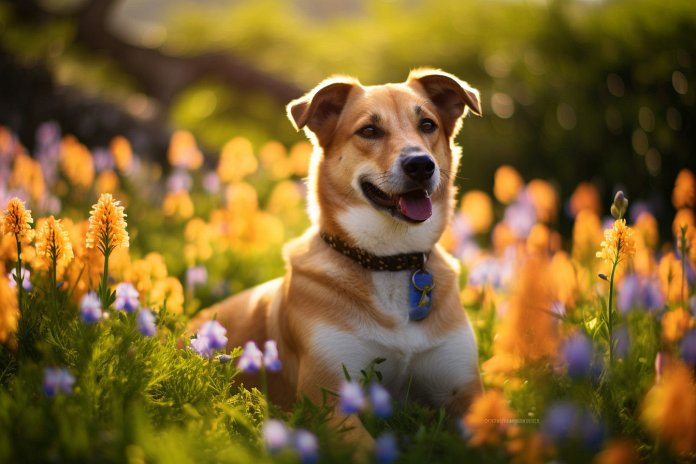
Loneliness – it’s a feeling that human beings are deeply familiar with that hits them at their very core, but did you know that humans aren’t the only ones who feel these emotions? Did you know that your pup can feel loneliness, too? It’s a heartbreaking idea – you love your doggo and you want him to be happy and healthy, but you can’t be with him all the time.
If you’re asking yourself questions like: “what can I do?”, “how can I tell if my dog is lonely” or “how can I combat loneliness for my pup?” then you’ve come to the right place. We’ve outlined all the signs and symptoms you should keep an eye out for, how to combat them, and what you can do to help fight loneliness for your pup.
Read on to find out more!
How To Tell if Your Dog is Lonely
It’s not as simple as just deciding whether or not your dog is lonely. Because they are a pup, they can’t sit you down, take your hands in their paws, and tell you that they’ve been feeling neglected when you go to work. Just because they can’t verbalize doesn’t mean that they aren’t able to give you signs, though. If you’re wondering if your dog is lonely, it’s important to open your eyes to the signs and body language cues your dog is giving you. There are plenty of ways to tell if your dog is suffering from loneliness or from anxiety about being alone when you leave, you just have to know what to look for.
First, your doggo will probably start to invest their time into destructive behaviors. Those shoes you love? Ruined. That couch you spent a bunch of money on? Torn to shreds. If you find yourself dreading coming home every day because you expect to return to a mess, it’s likely your dog is lonely.
If they bark or howl excessively without being able to be calmed down, that’s also a likely sign of loneliness. Think about it, they’re crying out for you and your attention – a surefire sign of loneliness. They also might start behaving in ways they never have, like using the bathroom in the house. While it’s always possible there’s a medical issue involved in that, if you start to find your dog leaving presents around the house for you, they’re likely trying to send you a signal that they don’t want you to leave anymore.
Worse, they can have a limited appetite, refuse to eat, and have a lethargic energy level. If a pooch is overly-tired refuses to eat, this can mean he’s stressed out by the thought of you leaving him alone again. This could be a specific sign of depression.
Body Language
Make sure you’re keeping an eye on your dog’s behavior, and look out for some of these signs:
– Whining
– Chewing
– Howling
Other Signs
But that’s not all, make sure you’re keeping a look out on these doggy signs, too:
– Vocal Anxiety
– Destructive Behavior
– Accidents In The House
– Lethargy
– Fatigue Or Weariness
– Loss Of Appetite
Loneliness and Your Pooch
Pups have always been prone to loneliness when their people leave, and the science behind that (see our next section) can help detail that a bit more. Historically, it’s been proven through research, scientific experimentation, and various case studies that living with doggos can help decrease loneliness in people and increase their happiness and well-being.
However, there are other studies that reflect on the loneliness dogs face when their people leave them alone. Historically, dogs will turn to destructive behaviors, reverting from their trained behaviors (like using the bathroom outdoors), and act out (by howling and barking) to get your attention and let you know they want you to stick around.
The Science Behind Being Lonely
While loneliness may seem like a largely complex, human emotion, it can also be translated over to dogs. For them, it’s not quite as complex of a feeling, but can be boiled down to excess anxiety when their owners – you – leave them alone.
Dogs are likely to be more anxious, bored, or stressed, as opposed to the actual human emotion of lonely, but it can cause them to behave in ways they normally wouldn’t. It’s important to remember that some dogs, just like people, are more prone to anxiety than other pooches. Every pup is different, and some will experience varying degrees and symptoms. For example, dogs who are very attached to their owners because of trauma like transitioning from a shelter to a home, or from past abuse, will have a harder time dealing with loneliness and might require a bit more TLC throughout the day.
According to IFL Science, your pup’s stress levels increase when you leave, so, his heart rate, respiratory functions and hormones like cortisol go sky-rocketing. Typically though, the first 30 minutes of your absence is the hardest period of time for your pooch, with the majority of the time following being fairly calm.
How to Train Your Pup To Deal with Loneliness and What You Can Do to Help
When it comes to training your dog with how to deal with loneliness, the overall idea isn’t too difficult. If you’re unable to do certain things that might help (like get your pup a sibling or leave the radio or tv on for him) it’s important to take other steps that might be vital.
Train your pup to get used to an exercise regimen that will tire him out right before you leave. That way, if your pup is exhausted, he’ll spend less of his time focusing on you being gone, and more of his time napping to regain his energy. Additionally, it’s important to train your dog to learn that you leaving is not a negative experience.
Make sure your pooch has plenty of toys, and has lots to stay busy with when you’re gone. Bring out his favorite things – a blanket, a toy, a bed, and more — and ensure he has access to them. Purchasing toys that you can fill with treats or food puzzles are also a good way to train your dog to stay occupied. This will distract him and also teach him that when you leave, he gets a treat for being good.
Combatting loneliness for your pup: signs, symptoms, and solutions.

Tips & Things to Know
1️⃣ Look for signs of loneliness in your dog, such as destructive behavior, excessive barking or howling, behavioral changes like using the bathroom indoors, loss of appetite, and lethargy. These could be indications that your dog is experiencing loneliness or anxiety when you’re not home.
2️⃣ Dogs also experience feelings of loneliness and anxiety when their owners leave, similar to human emotions. Symptoms may vary from dog to dog, with some being more prone to anxiety than others. It’s crucial to be aware of these signs and provide extra care if needed, especially for dogs with a history of trauma or transitioning from a shelter.
3️⃣ To help your dog cope with loneliness, you can train them to get used to an exercise regimen that tires them out before you leave, ensuring they have plenty of toys and their favorite items to stay busy with, and introducing food puzzles or treat-filled toys to keep them occupied and create a positive association with your departure.
Frequently Asked Questions, Answered ✅
1. How can I tell if my dog is lonely?
– Look out for signs such as destructive behavior, excessive barking or howling, using the bathroom indoors, limited appetite, lethargy, and fatigue.
2. What are some body language cues that indicate loneliness in dogs?
– Whining, chewing, howling, vocal anxiety, destructive behavior, accidents in the house, lethargy, fatigue, and loss of appetite.
3. Why do dogs feel lonely when left alone?
– Dogs experience excess anxiety when their owners leave, which can cause them to behave in ways they normally wouldn’t. Some dogs, especially those with past trauma or attachment issues, may have a harder time dealing with loneliness.
4. How does loneliness affect a dog’s stress levels?
– When left alone, a dog’s stress levels increase, leading to heightened heart rate, respiratory functions, and hormone levels such as cortisol. The first 30 minutes of absence are typically the most challenging for a dog.
5. How can I train my dog to cope with loneliness?
– Establish an exercise routine to tire out your dog before leaving, provide plenty of toys and activities to keep them busy, and create positive associations with your departure through treats and rewards.